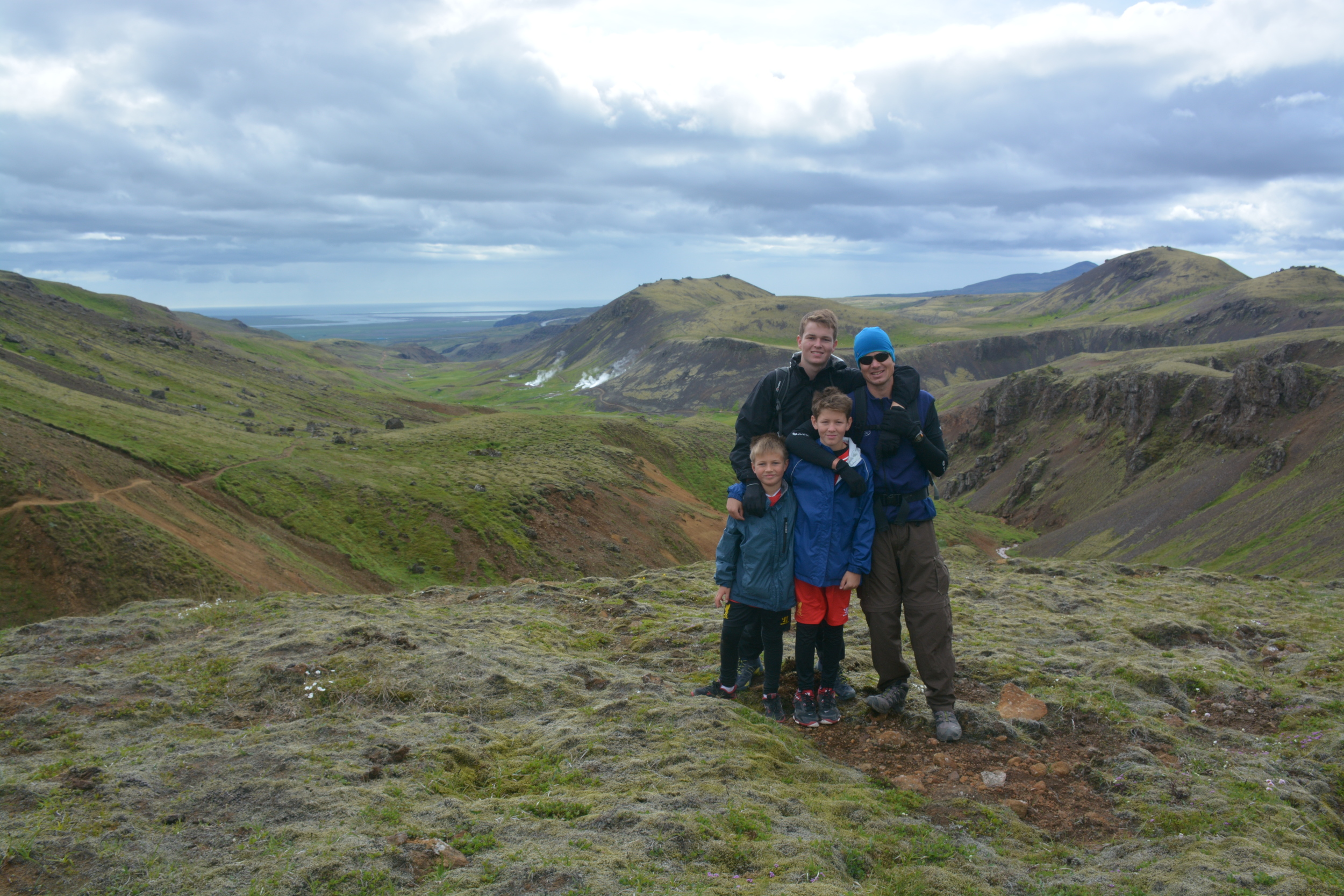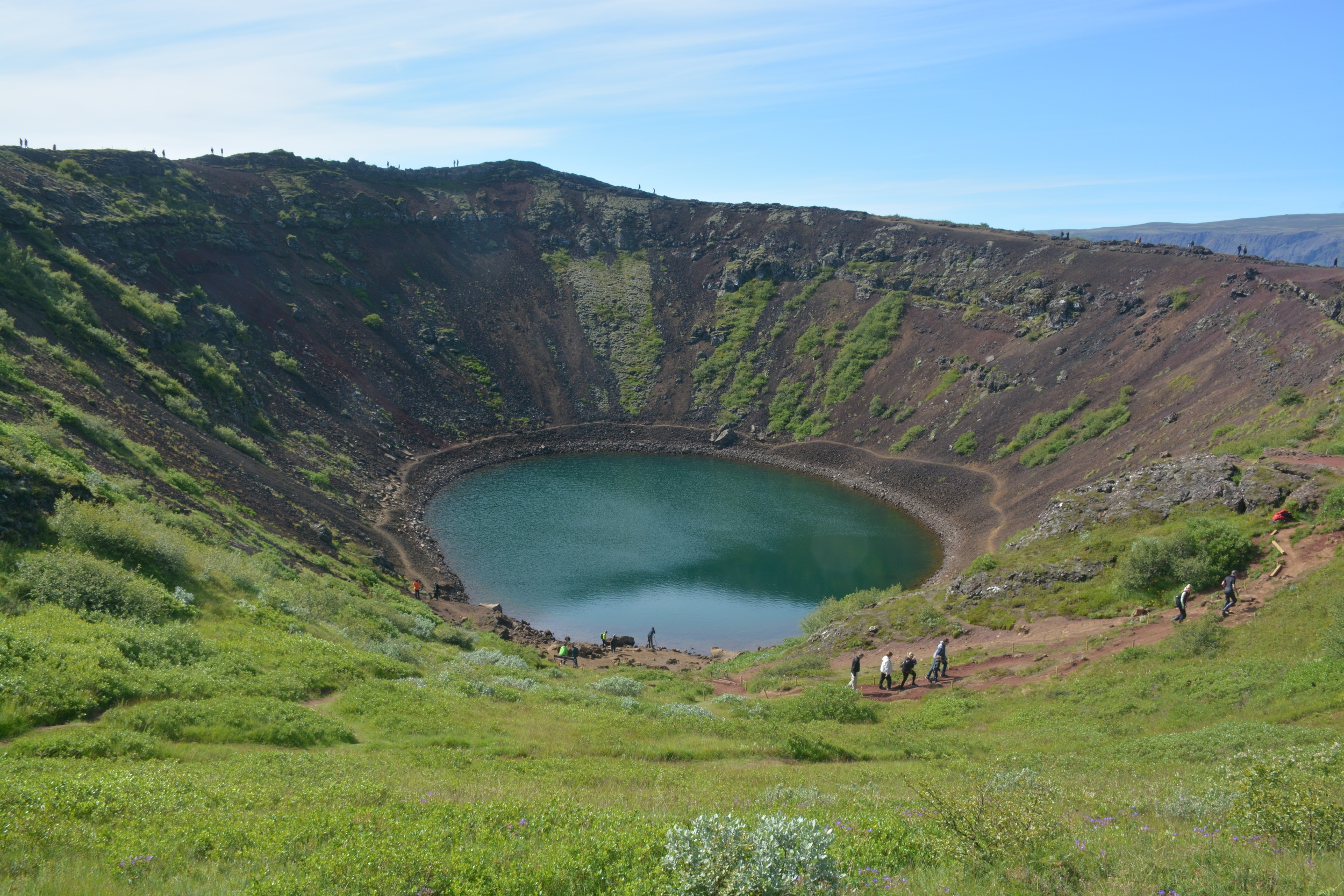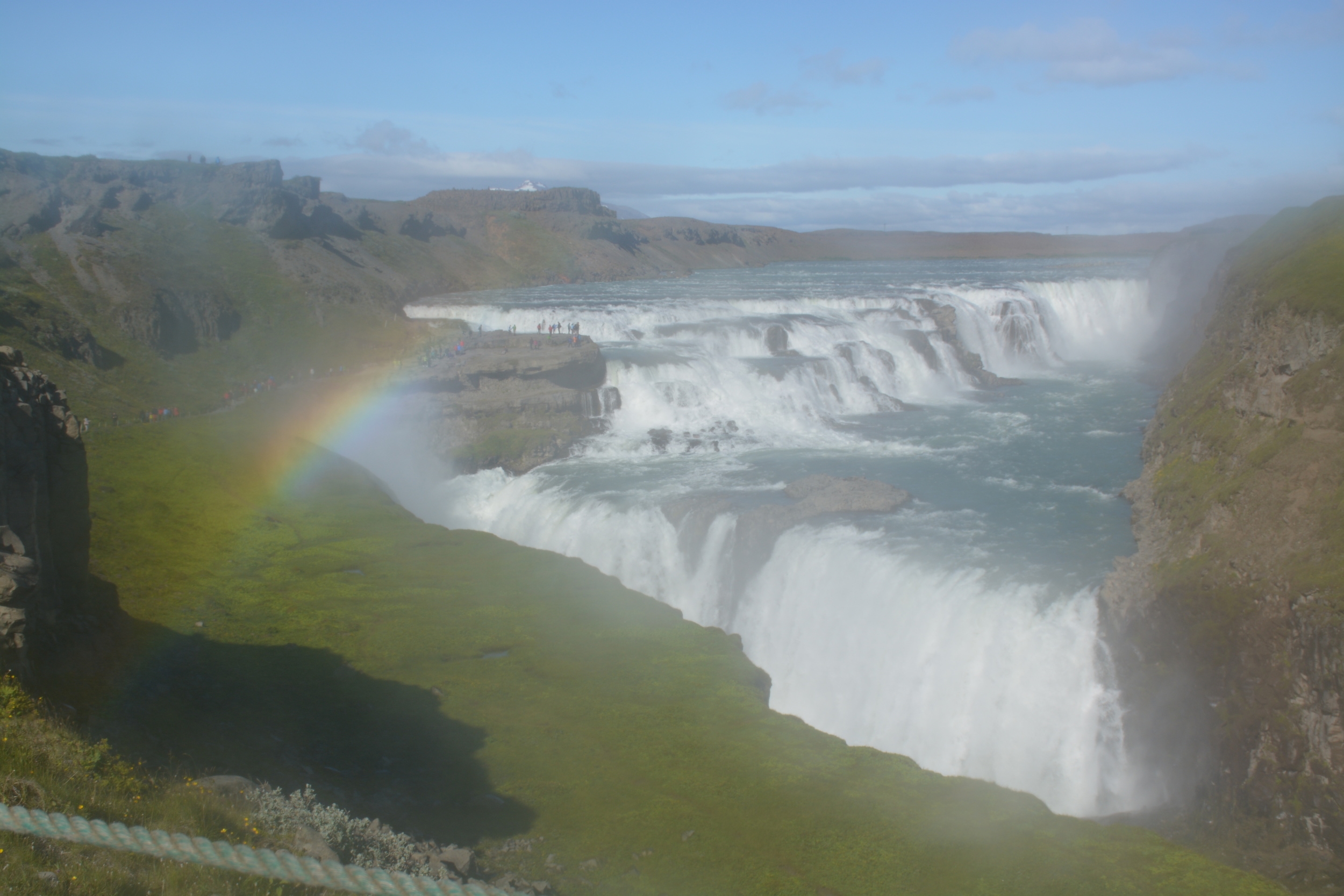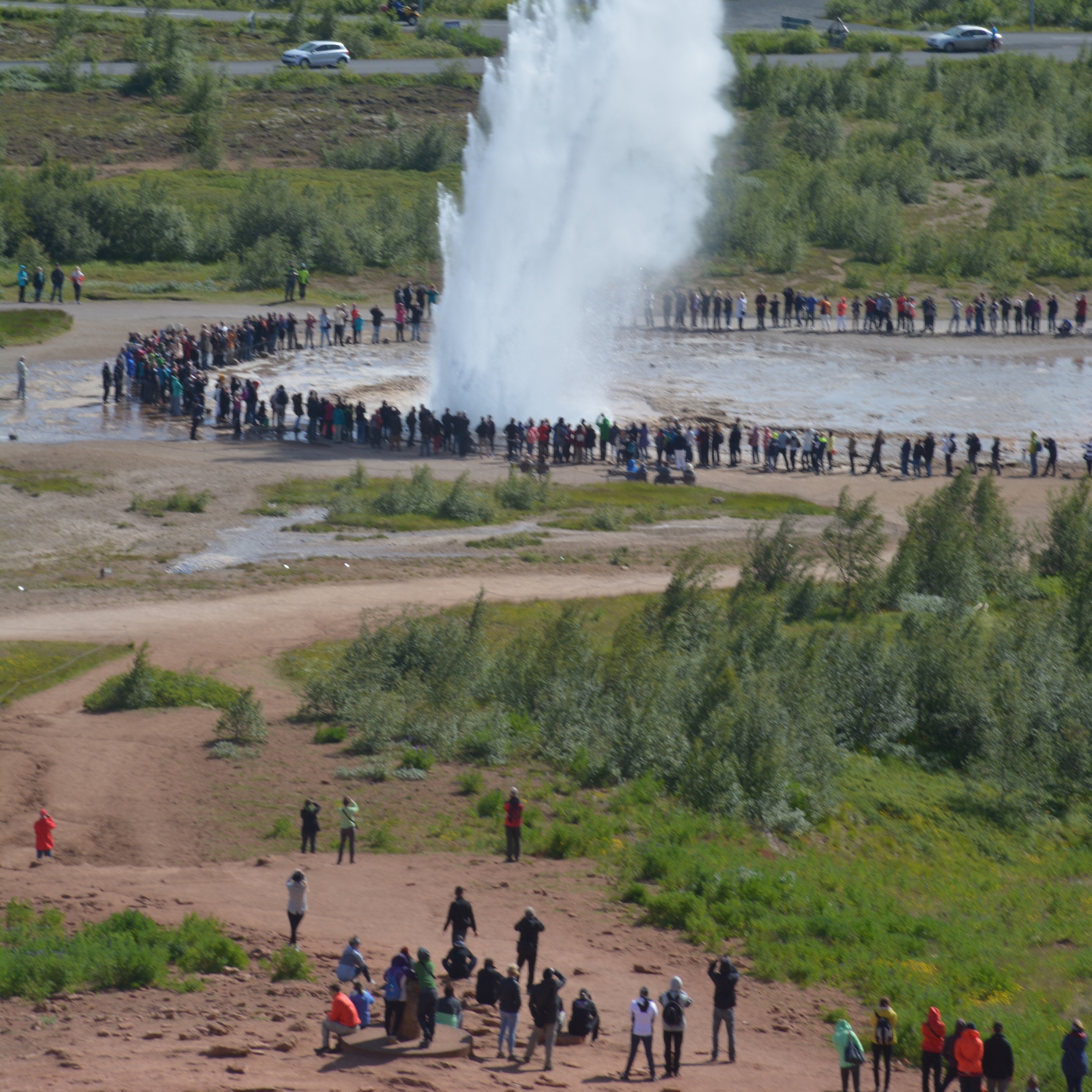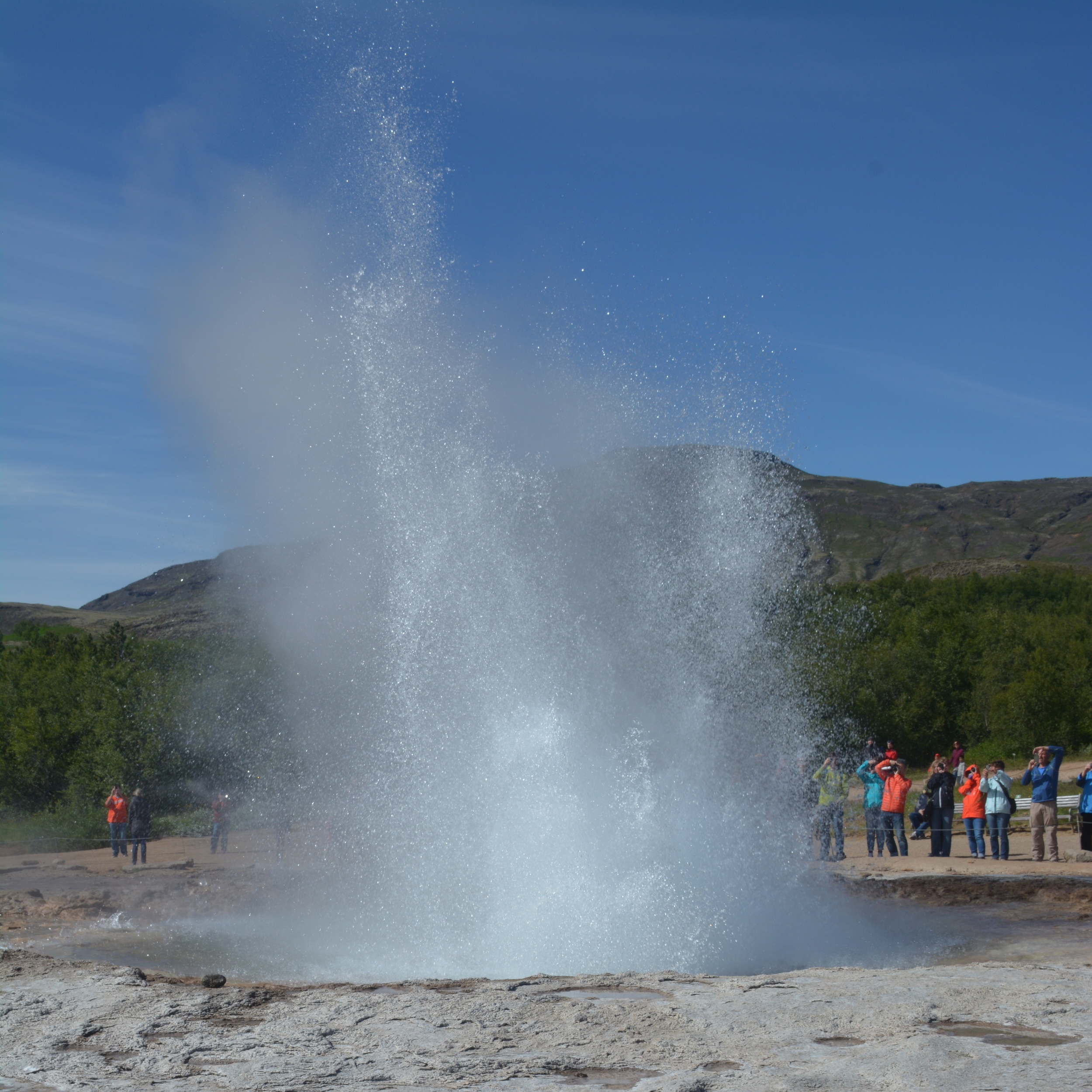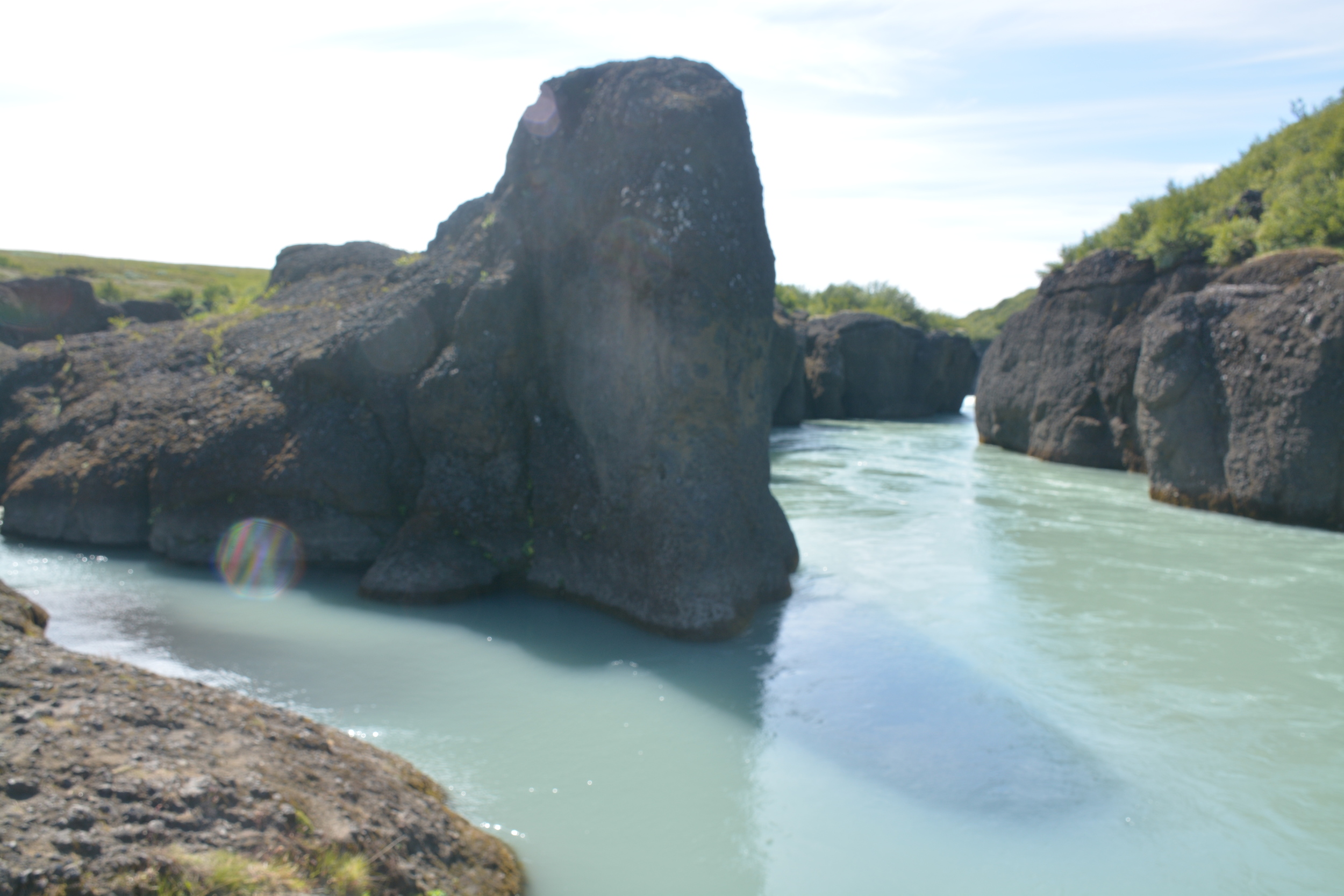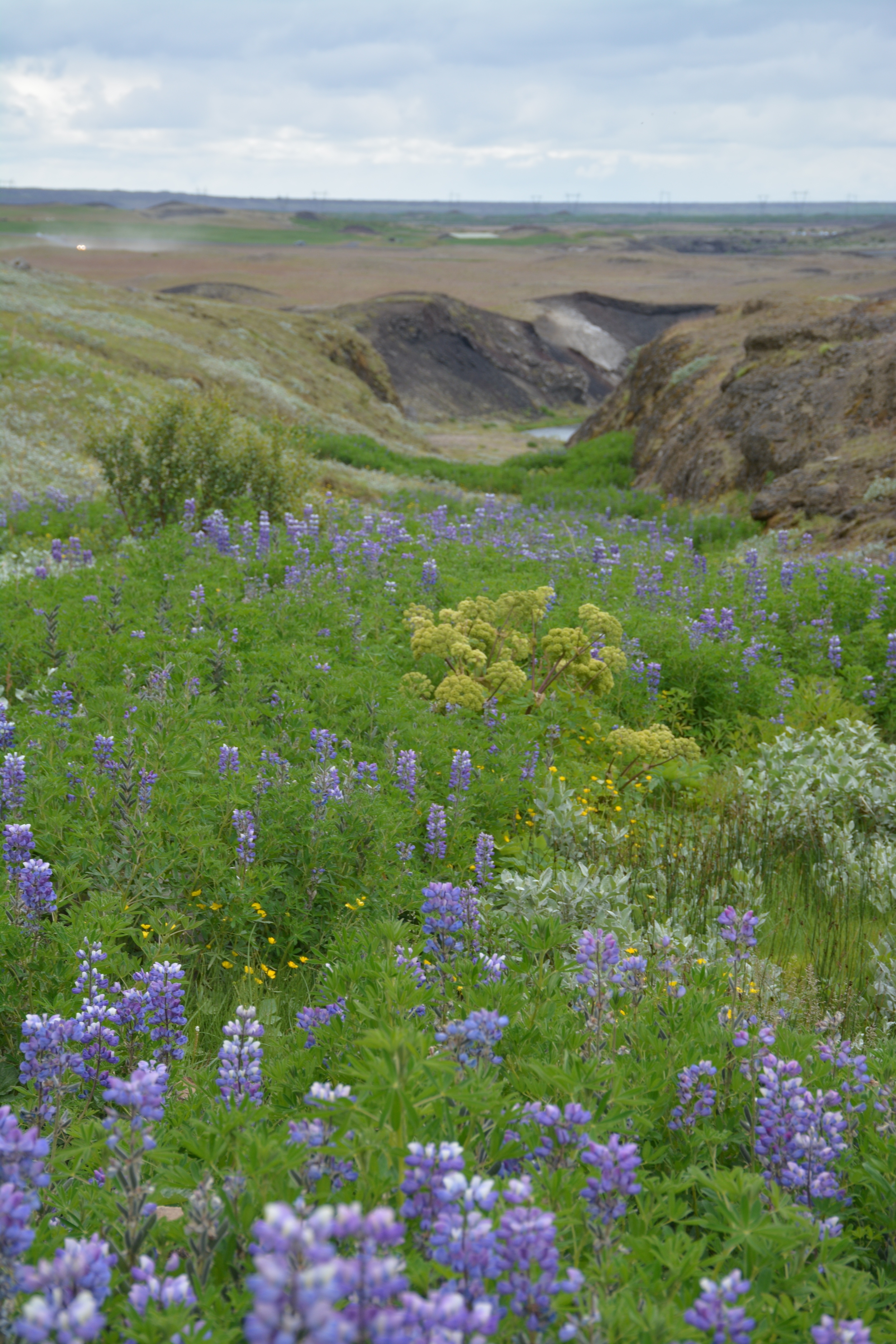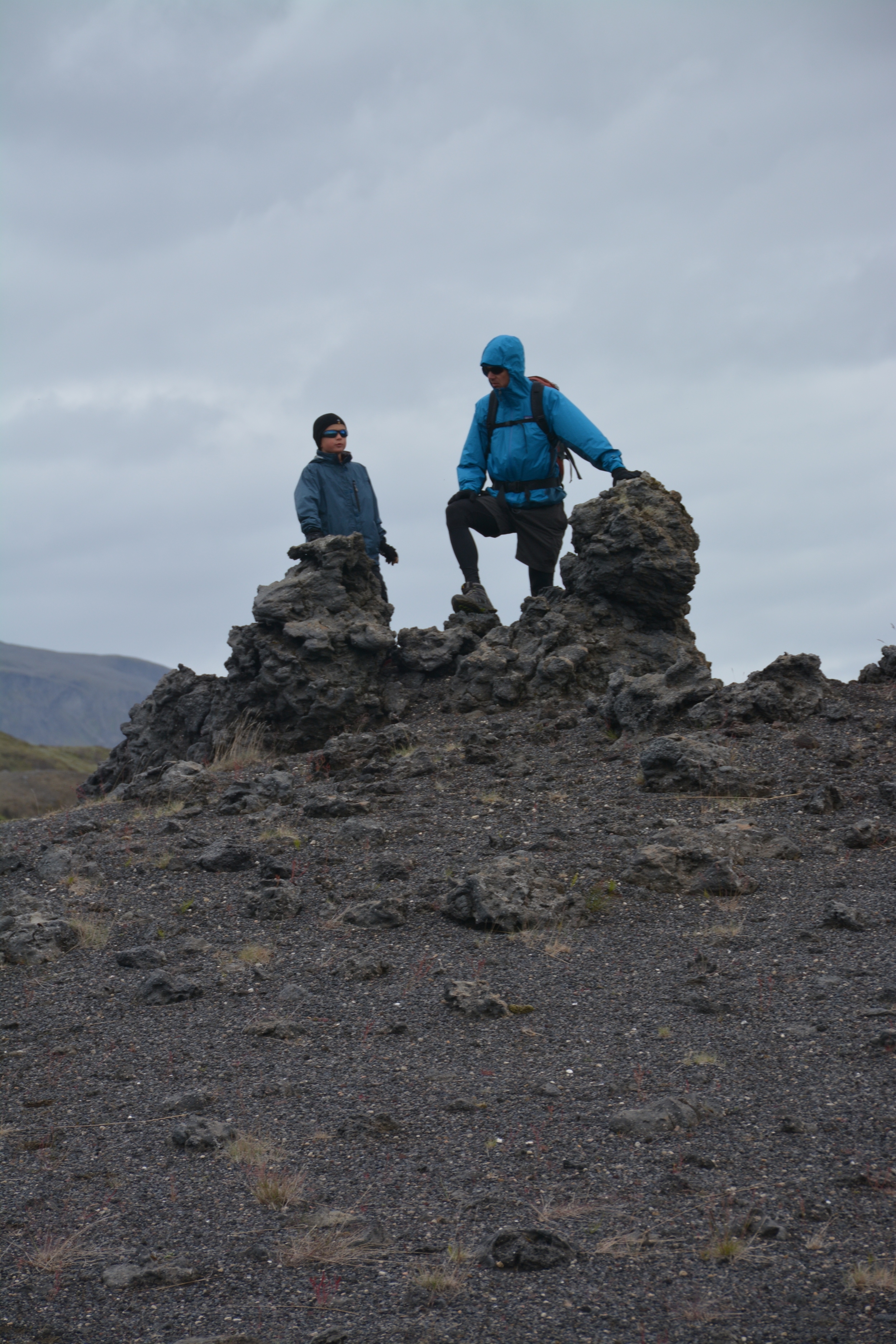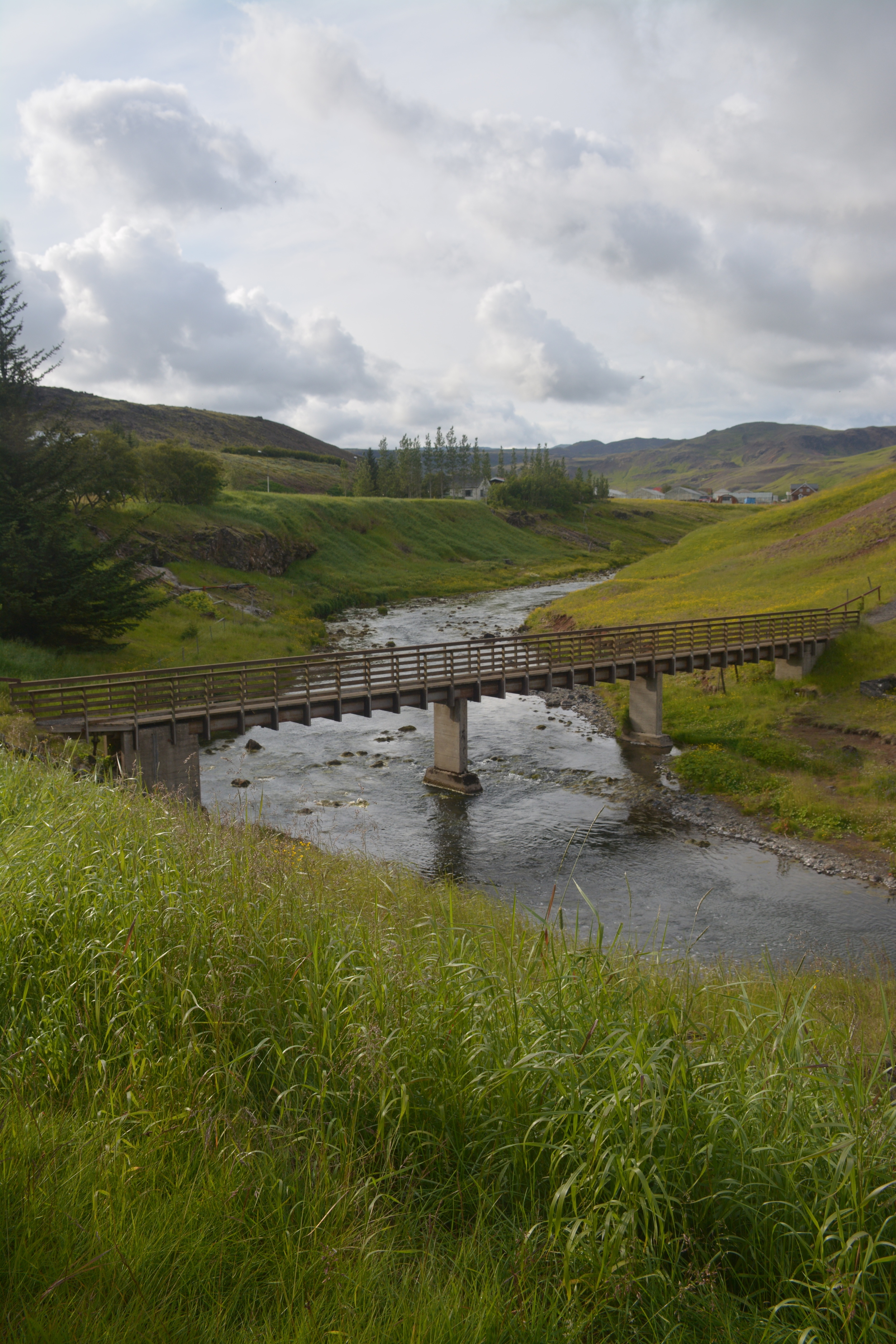If you want to know how small Iceland is consider these two facts: 1) Until moving to Europe, we knew exactly one person from Iceland. Though Thury now lives in Seattle, we happened to bump into her at the Reykjavik Airport on the day of our departure. 2) A few weeks ago we were at a party seated next to a couple from Iceland. Though they now live in Luxembourg, not only were they surprised to hear that we visited their tiny hometown in Selfoss during our Iceland trip but that we also had a (bad) photo of their favorite Selfoss restaurant still on our iPhone camera roll. That’s the kind of chance encounters you have when you visit a country with a population of only 325,000.
So, Iceland. Rewinding a couple months ago for this post.
One of the many benefits of being an expat is an annual home trip. We usually take ours in August when European beaches are jammed with the entire European labor force and their brothers, aunts, and second cousins. Plus there’s no place like Seattle in August, or so I thought.
This summer we, at my outdoor loving husband’s urging, decided to take Icelandair up on its well-publicized offer for a free stop-over in Iceland from Europe in route to the US. You can stopover for up to seven days going either direction at no additional airfare. I, of the outdoor liking kind, agreed to four. That was before I consulted the Internet for average weather temperatures in August (brrr…..) and before I conferred with my three children who let me know I was in effect robbing them of their Seattle time (grrr….). The good news is it only takes one steamy photo of the Blue Lagoon to turn that frowny face upside down.
Iceland started heavily promoting themselves as a tourist destination after the 2008 financial crisis as a means to boost revenue but the tipping point for tourism take-off was the 2010 eruption of the Volcanco Eyjafjallajökull. This was the eruption that temporarily closed the airspace for 6 days and stranded 8 million passengers. While the situation was unpleasant for those impacted, it did put Iceland and it’s geological wonder front and center in the global news cycle for 6 days. With a blanket of TV footage, curiosity and interest peaked. The number of annual tourists to Iceland doubled between 2008 and 2014.
Chances are good once you tell someone you are heading to Iceland, much like seeing the car you just bought everywhere on the road, you’ll start noticing friends and friends of friends who’ve been. I don’t know how most people do their Iceland stop-over but if the number of Reykjavik Excursions buses is any indication, many of them seem to be doing packaged bus tours or hitting the Blue Lagoon (near the airport) and Reykjavik and calling it 36 hours. While there is nothing wrong with that approach, especially if time is limited, in my opinion Iceland is the ideal place to rent a car and do a self-driving tour.
For starters, there is only one ring road around the entire island making it hard to get lost. I am sensitive to getting lost and there simply aren’t enough roads in Iceland to make that a possibility. Second, with a population density of 35 people per square kilometer versus 3 in the US, part of why you you’d visit Iceland is to get a humanity break. Being with a busload of people with selfie sticks would kill that vibe. Third, while Reykjavik if a fine city - you can totally see it in a day and would be more than able to give out directions by 4pm. Aside from the unusual looking Cathedral in central Reykjavik and glassed Opera House on the harbor, the architecture is all pretty flat and functional. City hopping isn’t really an option as towns outside of Reykjavik are more village-sized and gateways to an outdoor attraction. The reason to go to Iceland is squarely on the vast shoulders of the rugged and wholly unique landscape.
Given the pride of Iceland is the outdoors, the best words of wisdom are to come prepared for it. Think layers, waterproof clothing, sturdy shoes and several swimsuits. Conditions change in a hot minute and usually without much warning. We had ideal but completely atypical conditions without any rain. When we have since mentioned that to people from Iceland, they seem to know the precise days in August we were there.
The nice thing is that without the mental clutter of a long list of competing activities to do, you can give your full attention to the ever changing light. Bubbling hot springs turn up at unexpected moments. The vistas alternate between fertile and stark land. We only scratched the surface touring around South Iceland, the most visited area with many of country’s best natural jewels, but it was enough to quiet the soul and long for another visit.
With the exception of a failed attempt to hike through the Thorsmork National Park past the site of the 2010 volcanic eruption at Eyjafjallajokull and a successful “city mountain” hike up Mount Esja outside of Reykjavik known mostly to locals, we didn’t much venture off the beaten track. Unlike other places where you might be inclined to try the road not taken, the road around The Golden Circle is worth doing. Where else can you see a still active geyser, a deafening waterfall, and 6,500 year old volcanic crater now serving as a window on the groundwater – all in the span of an afternoon?
What to do:
A guidebook on Iceland is very helpful as you set out your plan. Many people like us start with Southwestern Iceland but there is also a lot to see in The West Fjords and Northwest Iceland. A longer trip around the island would be a fun adventure. We however made our base camp in Southwestern Iceland and did day trips from there.
Hveragerdi Hot Springs. Nothing reminds you that the earth’s core is hot, really hot, like a hot spring with white steam baiting you to come get warm and cozy. Hveragerdi, 45km east of Reykjavik, is the capital of hot springs and the town we choose to stay in for the first three nights. They have a geothermal area above the town. It’s a short hike to the hot river and there are walking paths that continue beyond there. Free.
Kerio Crater. A 55m deep volcanic crater. You can walk around the top of the crater and walk down into it. Small donation requested to visit.
Gullfoss Waterfall. A beautiful and powerful waterfall that is worthy of a visit. Because it’s Iceland and they don’t sweat safety regulations, you can get close enough to feel the spray. Free. We saw several other waterfalls in the South but their Iceland names don’t seem to stick with me.
Geysir. It’s fun to walk around the geothermal field with some dormant hot springs and some still active geysers and wait for the shooting tower of water. You don’t even have to be patient as the Geyrir performs every few minutes. As both Gulfoss and Geysir are big tourist attractions, you will be in some company but they do a nice job of not obscuring the beauty of nature’s highlights. They also have good bathrooms and visitor centers at both stops.
Bruarhloo. A gorgeous canyon formed by the river Hvita with interesting rock formations. It’s situated between Geysir and Gulfoss and so very easy to access. For much of the time, we were the only ones there. Maybe our most favorite stop to scramble around.
Thorsmork National Park. Situated between mountains and glaciers, this park is endless with hiking trails. But due to not having a 4x4 vehicle the hike we planned morphed into a less interesting walk through a lava field.
How to get there:
For those in Luxembourg, we flew Icelandair out of Brussels and found inexpensive (and manageable walking distance close) long term parking.
Getting around:
There are multiple car rental companies on site at the Reykjavik Airport. You should splurge for the four wheel drive. We didn’t and regretted it. Many of the trail heads are over rutted terrain and require a four wheel drive. A two wheel drive says “I’m here to walk.” A four wheel drive says “Someone in my party is here to hike.” Also be aware that the maximum speed on the entire island is 90kph. With the open road and not very many cars, driving this slowly requires constant vigilance or me as a driver. We did get pulled over (but not ticketed.) Finally, it’s a bit desolate between Reykjavik and the airport so remember to gas up if needed before heading to the airport.
Where to stay:
If you are traveling to Iceland in the summer, it is important to get a jump on accommodation. Hotels and guest houses fill up quickly.
Frost & Fire Hotel, Hverhamar, 810 Hveragerði, Iceland; +354 483 5949; Simple rooms with even simpler bathrooms in natural setting (each room exits directly to outside) one hour outside of Reykjavík close to sites in south of Iceland. Well on the beaten path for good reason. Not fancy. Excellent breakfast included in rates. Easy parking.
Kvosin Downtown Hotel, Kirkjutorg 4, 101 Reykjavik, Iceland; +354 571 4460; Nice, clean hip hotel apartments. Centrally located with a price tag that reminds you of it. Worth the splurge for one night. Fixed breakfast with homemade muesli, yogurt and sourdough bread at next door’s cozy Bergsson Mathús included. Not as easy street parking.
Where to eat:
Iceland portions are more US like than European like. However like everything else in Iceland, eating out is expensive. Best to pull out a map to remind yourself how far away you are from everything in Iceland and you’ll forgive the high prices.
Kjallarinn Kitchen Bar. Newish restaurant in Reykjavik tucked in a cave recommended to us by the hotel. Fish, international fusion heaven on a plate. Spendy but delicious and inventive dishes. Best meal.
Apotek Kitchen Bar. Hard to miss restaurant in the center of Reykjavik with seafood and free range lamb with a twist, 6 course dinner menu with much cheaper lunch and brunch menu. Went once for brunch and a second time for lunch. Nice atmosphere minus the ugly American returning her dish because it didn’t come out on a hot plate.
Tryggvaskali Restaurant. THE restaurant in Selfoss mentioned above. Old house converted into charming restaurant where it’s possible you might even be seated in your own room. Very small menu but the salmon with barley, baby broccoli, caramelized butter and blueberries is really all you need to know. (Also there is a hamburger on the menu.)
Kjot & Kunst. If large portion size, traditional cooking and eating carrot cake out of thermal oven sounds interesting (and it did to us twice), this restaurant in Hveragerdi gets the job done. (We preferred it to restaurant at our hotel.)






